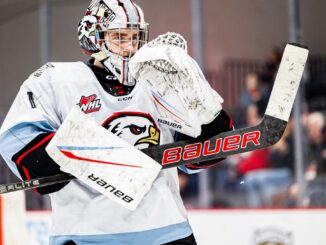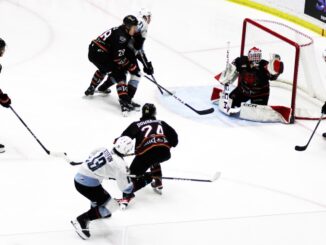
I was recently lamenting the Portland Winterhawks season coming to an ignoble end at the hands of the Kelowna Rockets, when an acquaintance shook his head disapprovingly and said, “I hate hockey. It’s just too much needless violence. My son went to one Winterhawks game, and all he remembered was the big fight.” I was diplomatic and non-committal, until he followed this up with “that’s no sport. It’s a sideshow.”
Well, this is where I got less cordial. I know he didn’t mean this as a slight against hockey fans like myself, but this was a highly reductive take on one country’s national past time. This isn’t a unique perspective, though. Without fail, if a television or movie character is written to be a grade-A meathead, chances are he’s stoked to get tickets for a hockey match. It’s an image problem that hockey endures more than North American football, despite the similarities they share. And the problem most folks have is the fighting.
To borrow a video game term, hockey has always contained a minigame in the form of checking, shoving, and full-on fisticuffs. When I say “always,” I mean that literally; the first recorded indoor game, which took place in 1875 in Montreal, reportedly ended in a physical altercation. Decades of hockey history include notable “enforcers” and outright “goons” who were primarily employed to fight on skates, while points and positioning were afterthoughts.
That time is largely over now. The NHL has curbed excessive fighting, and minor and junior leagues have been considering a complete ban for years. The intentional removal of a player’s helmet is no longer tolerated anywhere, and the WHL has implemented an “instigator penalty,” a two-minute minor dealt to whoever starts a ruckus (added to the five minutes for participating in the fight at all). That rule has done a great deal to reduce the frequency of fighting, with over 2,500 WHL fights in the 1997-1998 season to 784 for 2015-2016.
Okay, here is the thing: The concern over fighting in ice hockey is absolutely valid. Particularly in the junior leagues where legal minors are competing, the prevalence of concussions and other head injury is too substantial to merely wave away. Fighting isn’t necessary to the actual game of hockey, but is merely a case of politics on the ice. It concerns status, respect, justice. But preserving something like fighting–in the name of tradition or mere pride–is admittedly ridiculous.
Instead of focusing on how long something is done or what changes should never occur because of tradition, we can actually look at the logical reasoning behind fights. Hockey players don’t pick fights just for a physical contest, but to enact protection of a scorer or a goalie, or failing that, to enact revenge. A fight can be a subtle maneuver when used to alter the pace of a game or give a jolt of energy to the team. And much like the designated hitter in baseball or the replay challenge in football, it’s difficult to remove the facet of the game once it exists.
A fight in hockey is sometimes a way of cordially telling the opposite team “No more cheap shots,” or punishing someone for harassment of another player. Arguably, it can sometimes prevent a number of injuries. After all, Winterhawks fans were missing high scorer Skyler McKenzie last week because of a nasty elbow he took to the head. If deployed at the right time and won, a fight could have informed the Kelowna Rockets that goonery was not tolerated, and maybe McKenzie could have avoided his concussion.
To address my opinion on the matter, I think fighting–or in many cases just the potential results of a fight–is necessary to a hockey game as a form of contingency. If two players are at each other’s’ throats all night, and the only way for everyone to move on and play hockey is a quick donnybrook, I say it’s in everyone’s best interest. But regulation of fighting should continue, and the WHL should be more strict than the pros if it means more protection for players under 21 years old. There should be a healthy dose of consequence for any player who chooses to drop the gloves.
Maybe the fighting isn’t the issue so much as the glorification of it. Football has its fair share of concussion controversy, but at no time during a football game does the action pause while everyone cheers at two players trying to thrash each other’s rutabaga. It’s a real image problem, as I said earlier, but you know what? That’s hockey.



